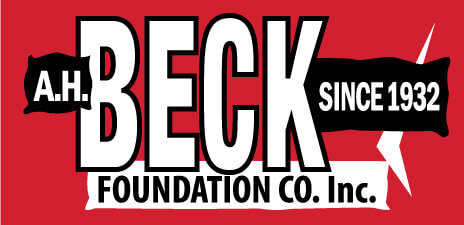Grouting is a ground improvement technique utilizing a relatively stiff (low mobility) grout injected at high pressure into a relatively loose granular stratum for densification. The technique is typically used to increase bearing pressure and reduce settlement of proposed structures, can be used to re-level structures that have settled, and to densify beneath structures proposed for increased loading.
The process of compaction grouting involves the installation of 2 to 4 inch diameter drilled or driven injection pipes to the bottom of the zone for improvement. The pipe is then withdrawn through the target layer in increments while injecting bulbs of grout into the ground. As the highly viscous bulb is injected in the ground, the radial force exerted compacts the in-situ soil. A relatively slow injection rate is used to allow water to dissipate and prevent fracturing the soils. Typically an initial injection grid is completed, followed by a secondary grid with injection points in between the initial grid points. Pumping of the grout for any individual grout bulb is terminated once refusal pressure is obtained or should heaving occur at the surface. Typically greater than 1,500 psf overburden stress is required to maximize densification. This stress can come from overburden soils, surcharge loads and/or foundation loads.
Jet grouting is a similar bottom up grouting technique, but utilizing very high pressure (4,000 to 6,000 psi) grout injected through small nozzles at very high velocity; which tends to fracture and destroy the natural matrix of the soils. The result is a relatively homogeneous structural element called soilcrete with improved engineering properties. Due to the high pressures involved, relatively large column elements can be constructed through small boreholes giving the technique a very good limited access advantage. The column elements are often constructed overlapping to form large treated masses. Jet grouting can be applied to a wide range of soils from primarily granular soils to plastic clays. Jet grouting is typically used for underpinning, excavation support, stabilization of soft or liquefiable soils, and control of polluted or unpolluted groundwater.
